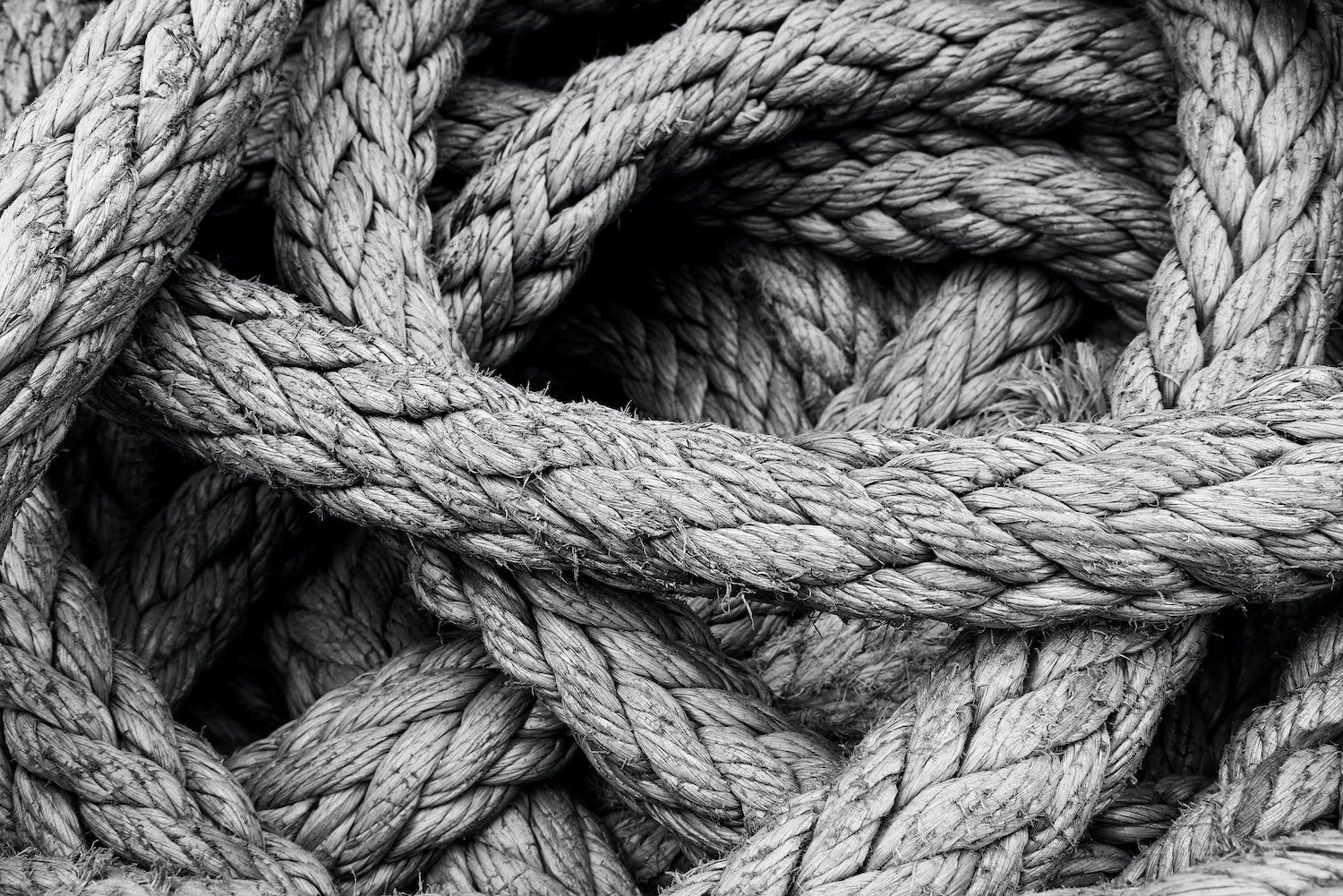Shibari, The Art Of Japanese Rope Bondage
Photo by Saskia van Manen on Unsplash
Have you ever heard of rope bondage? Often misinterpreted, this growing subculture trend is something between Japanese art and sensual bondage. Let's get into details, shall we?
What is shibari?
Shibari is the ancient Japanese art of bondage tying, connecting a binder and a bound in a beautiful and erotic performance rooted in eastern aesthetics. In the West, shibari is confused with kinbaku, and even though they are used interchangeably, they remain two distinctive approaches to tying.
Shibari means "to tie", which doesn't refer to any particular type of tying in Japan. A shibari performance generally carries meaningful symbolism, to tie and being tied is the actual experience.
Kinbaku means "tight binding", and is a practice that uses rope tying to restrain the body for erotic pleasure and foreplay. It can be associated with regular Western rope bondage within BDSM circles.
With time, shibari evolved in many different branches and practices. Still, it mainly refers to tying people with rope as a consensual art making and experimentation, highlighting the art of ties and intricate knots.
Often reduced to its BDSM connection, shibari is a multilayered practice that can satisfy people on various levels. Some enjoy the technicality of the movements, others, the beauty and aesthetical potential of the bound body through photography and performance art. Some others, of course, relish the intimacy and sensuality of this kinky practice, commonly displayed in Japanese adult films.
A brief history of shibari
Ropes hold a special place in Japanese culture, such as those displayed on trees, rocks, gates or shrines, which are believed to represent boundaries between the profane and the sacred.
In The Beauty of Kinbaku, the author writes: "Shibari/Kinbaku has evolved because of Japan’s tolerant religions and their attitudes about sexuality, its history and martial arts, its 250 years of self-imposed isolation from the West, its love of beauty, art, form, and pattern and the mysterious alchemy that connects all of these."
These tying techniques can be traced to the Japanese feudal Edo era (1603-1868) when Samurais practiced Hojōjutsu, the traditional martial art of capturing and torturing prisoners using ropes. In fact, intricate knots were functional, aesthetic and symbolic, as they varied according to the social status of the prisoner and its crimes.
The rope techniques kept on living until the rise of classical Japanese kabuki theatre in the 18th century. As scenes depicted Hojōjutsu ties, actors had to modify them to make them safe, comfortable and aesthetically pleasing!
It's only during the 20th century that shibari began to be sexualized, while it spread beyond Japan to Europe and the United States, especially within the fetish and BDSM circles and media.
What's the meaning behind shibari?
First, it's not all about sex. Well, not always, but it can be: tying and being tied is obviously an intense experience... Shibari lies in emotion and surrender, and the pleasure is found in the journey, not necessarily the destination - which makes the beauty of the practice.
According to the artist Hajime Kinoko, shibari is still not well understood in the West. To straighten things out, shibari is not supposed to be painful or violent. Even though the rope is a symbol of power rooted in restraining prisoners, a bondage artist and a model should be on equal ground. Of course, there is still a form of fear, uneasiness, anxiousness, and a thrill of anticipation on the side of the tied person.
Many shibari artists insist that the essence of bondage is the relationship between the binder and the bound. Bondage experience is collaborative work, which wouldn't be possible without mutual trust.
Benefits of shibari
The meaning and purpose of shibari change depending on the person who ties and gets tied. Practitioners experience a wide range of benefits:
Abandoning control, surrendering to the position and the moment
Giving you a strong awareness of presence in body and mind
Learning to let go in an uncomfortable position
Increasing body positivity
Deepening intimacy with a partner
Pushing your limits, out of your comfort zone
Enhancing communication, empathy and sensitivity
Stimulating creativity
Acting as meditation and stress relief
How to start practicing shibari?
Shibari is an art that takes years to master, and each artist comes with a certain attitude and way of life, so choose one that aligns with your values.
Plus, it's essential to learn from masters and certified practitioners as shibari is not always a safe practice. The risks include falling, asphyxiation, excessively tight rope, and a simple mistake can lead to injuries such as nerve compression, damage or circulation issues.
Resources & Shibari Artists
France Culture 'Des Corps Et Des Cordes'
Documentary 'The Pleasure Of Rope'
Artist: Subay
Artist: Naka Akira
Artist: Hajime Kinoko
Artist: Nawashi Kanna
Courses: Vox Body
Courses: Shibari Study
Courses: Studio Kink
Courses: Shibari Academy











Let's be honest: what is the first thought that comes to your mind when you hear about scheduling sex? Boring. Laborious. So-not-sexy. Yet, many sexologists swear by this practice to cultivate intimacy within a relationship.